Building a Russian Zakuski Platter for Entertaining
39 min read Craft a classic Russian zakuski spread with caviar, smoked fish, pickles, breads, and vodka pairings, plus plating tips and make-ahead ideas for effortless, elegant entertaining. October 06, 2025 12:08
The first time I understood zakuski, real zakuski, the windowpanes of my Moscow apartment were etched with frost ferns and the table was so crowded it seemed to ripple under the weight: cut-glass bowls glinting like icicles, curls of butter more golden than the lamplight, cold smoked fish shingled on porcelain with lemon cheeks and dark beads of roe. Someone cracked open the balcony door and a ribbon of December air threaded the room, smelling of birch, dill, and the faint ozone of snow. A bottle of vodka, lacquered with condensation, made its stately way around the guests. No one started with a main course. In Russia, you begin with a landscape.
That landscape is the zakuski table: a raucous collage of salty, tangy, silky, crunchy, and cold. It’s not a mere appetizer course—it’s an ideology of hospitality, a promise that everyone will find their way into the evening, bite by deliberate bite. Building a Russian zakuski platter for entertaining is a study in contrasts and balance. It’s also an act of love.
What Zakuski Means: More Than Hors d'Oeuvres

Zakuski—literally “things to bite after”—is often translated as hors d'oeuvres or canapés, but the spirit is different. Historically, zakuski grew from the lavish Cold Table (kholodnoye) traditions of imperial Russia: sideboards at country estates and city townhouses groaned with cold dishes meant to precede lengthy dining and even lengthier conversation. Later, in Soviet times, the idea democratized. A communal kitchen could still host a civilized spread—canned sprats opened with a key, a plate of home-fermented cucumbers, beet-pinked vinegret, and the obligatory black bread. Whether aristocratic or austere, the zakuski table was always about multiplicity and generosity.
To step up to a zakuski table is to walk into a carefully tuned orchestra: salted, smoked fish handles the bass notes; pickles and ferments play the bright brass; dairy and butter smooth rough edges like a velvet bow; meats punctuate with steady percussion; breads provide grounding rhythm. Vodka doesn’t lead—it accompanies, a clarinet weaving through.
The goal isn’t to overwhelm guests with excess but to offer a journey. Thoughtful zakuski entertains the palate in spirals: crisp to creamy, smoky to lemony, bracing to rich. The Russian verb is to snack, but the art is to compose.
The Foundation: The Table, Temperature, and Texture

Before a single herring fillet touches porcelain, think architecture.
- Temperature: Most zakuski are served cool—but not freezing. Fish and roe should be properly cold (use bowls set over crushed ice), while salads like Olivier are best lightly chilled to temper mayonnaise and keep textures crisp. Butter should be spreadable, not brittle; take it from the fridge 20 minutes before guests arrive.
- Texture: Aim for a spectrum. Pair firm, crunchy pickles with plush butter and supple smoked salmon; crumbly tvorog with satiny roe; dimpled sauerkraut with smooth potatoes. Your guests should find contrast in every reach.
- Color: The table is a canvas. Pink beets, tart green dill, ebony rye, salmon-orange roe, the milky white of smetana, the amber gleam of sprats oil. Use white plates to let the colors sing. A sprig of dill is not garnish; it’s a thesis.
- Materials: Use small porcelain plates, enamel bowls, glass compotes, and a couple of shallow platters. If you have a crystal compote or an old-fashioned tiered server, bring it out. Nonreactive spoons for caviar and roe—mother-of-pearl if you have it; otherwise, bone or plastic. Avoid metal.
- Bread: Slice Borodinsky (black rye with coriander) and a dense Lithuanian-style rye; add a white baton for softer palates. Keep breads under a linen napkin to preserve moisture. Warm blini can be held in a covered dish lined with a towel, the way countless grandmothers do.
A little theatricality matters. If possible, a chilled bottle of vodka should arrive wrapped in a dish towel, set in a rustic ice bucket, breathing visible cold. Lemon wedges should glisten; dill should look as if it just shrugged off morning dew.
Vodka and Companions: Pairing Strategy That Sets the Tone
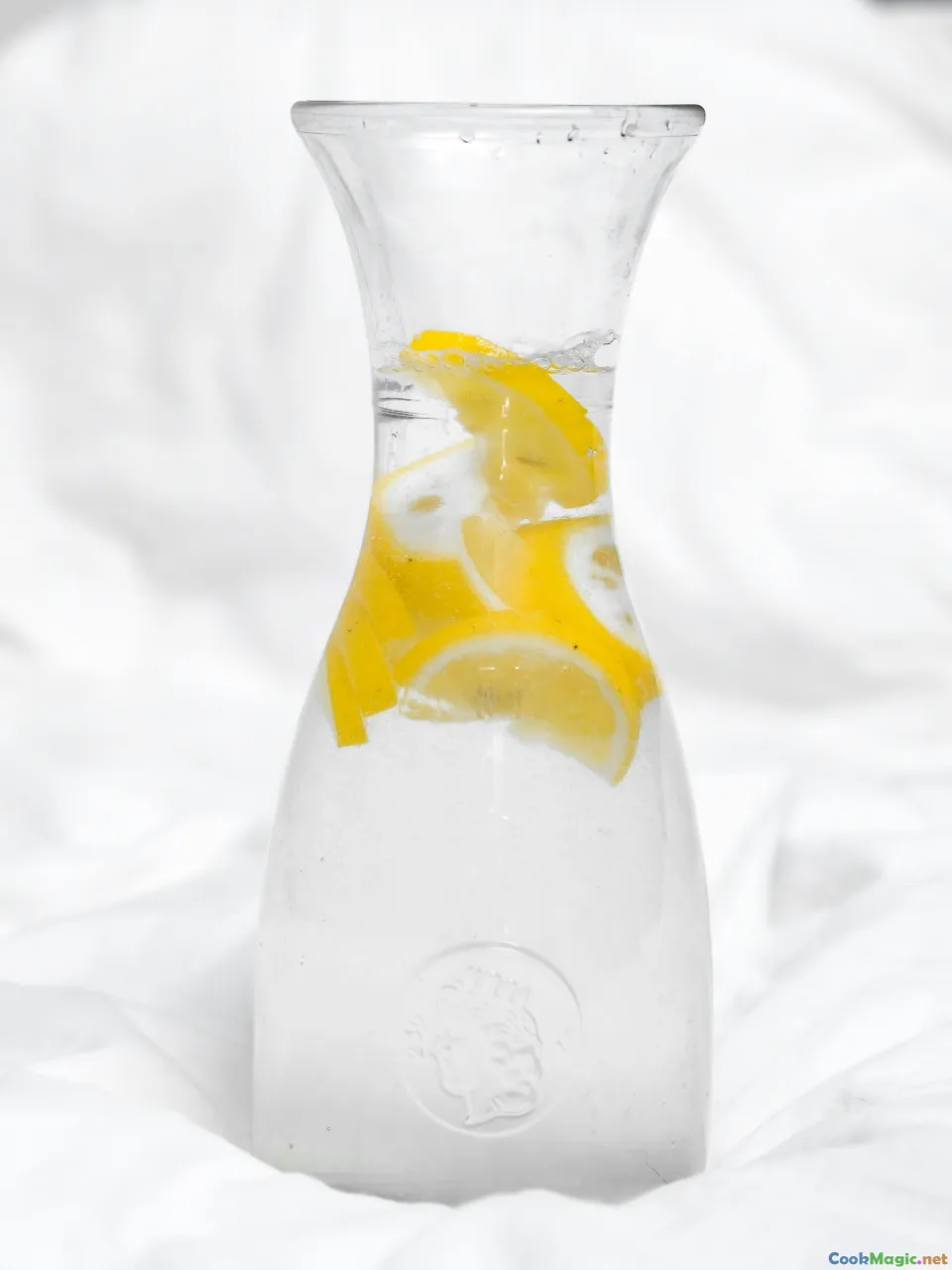
Traditionalists serve vodka very cold—but not viscous-frozen. Around 0 to 4°C is perfect, where the alcohol is tamed and the grain’s sweetness peeks out. Consider the grain base: wheat vodkas are often rounder; rye feels spicier, with a peppery finish; potato can be creamier. If you can find a small-batch rye vodka from the Baltic states or a classic Russian wheat style, offer both and let guests note the differences.
Pairings are intuitive:
- Fatty fish (salmon, sturgeon, sprats) love a clean, piercing wheat vodka.
- Robust pickles and sauerkraut sing with rye vodka’s warmth.
- Horseradish-infused vodka (khrenovukha) is a knock-out with cold pork and tongue with horseradish.
- Pepper vodka (pertovka) complements smoked meats and lard—just a sip.
Not everyone drinks. Serve:
- Kvass (bread-based, slightly fermented, malty refreshed): chilled, not icy, with dill sprigs.
- Mors (cranberry fruit drink): tart, luminous ruby, a counterpoint to smoke and salt.
- Unsweetened black tea in glass podstakanniki (metal holders) if you want to channel a train-car romance.
Teach the tiny ritual: a small bite of something salty first, a sip of vodka, then a chaser (zapivka) like mineral water or mors. The zakuska does not follow the drink—it leads it by the hand.
The Salty-Silky Axis: Fish, Roe, and the Breath of Cold Rivers
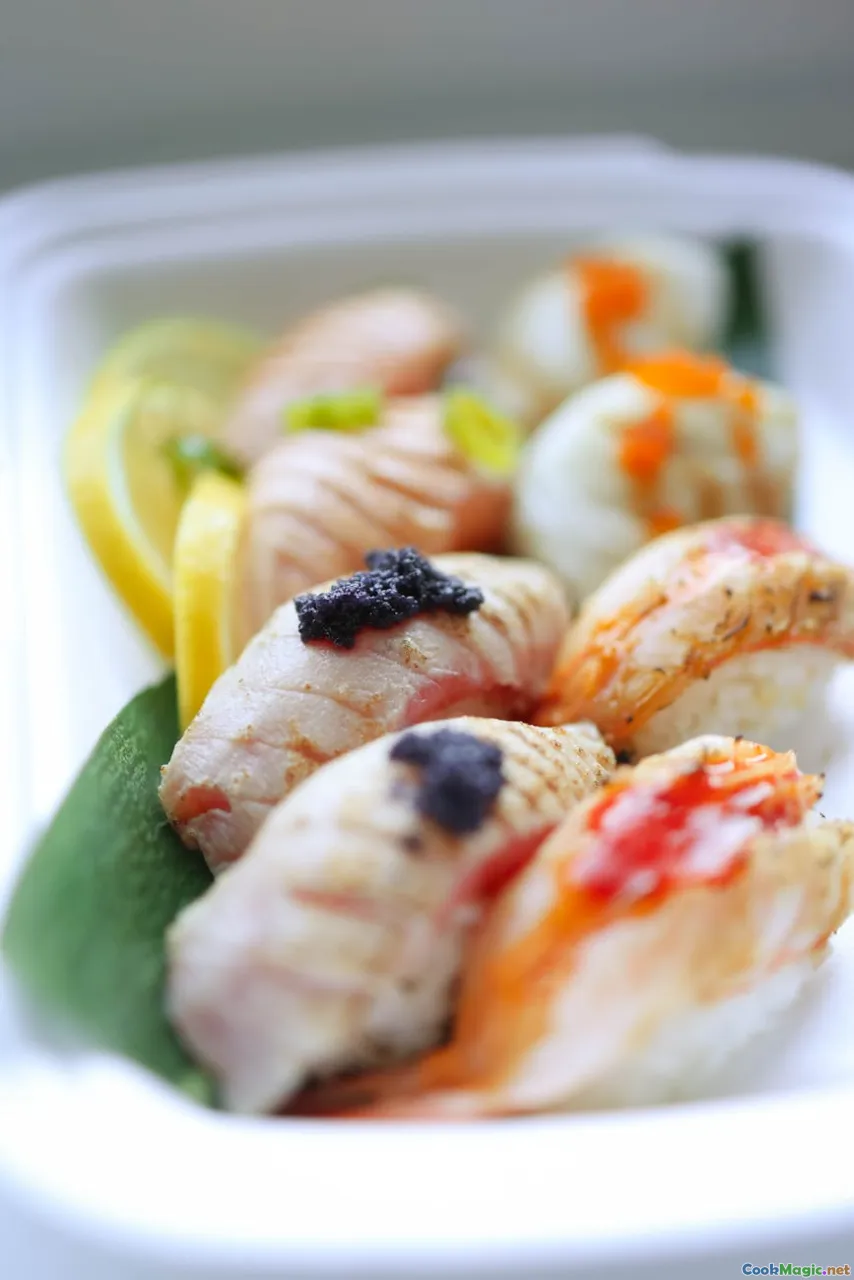
Fish is the soul of a zakuski spread. In the dim markets off Nevsky Prospekt, fishmongers place smoked sides of salmon on wooden racks so the oils catch the yellow electric light. In Irkutsk’s Central Market, I remember a winter morning when the vendor cracked open a bellied omul—the aroma was alder smoke and clean lake—and wrapped it in butcher paper that left translucent stamps on my gloves. That memory haunts every platter I assemble.
Build your fish selection with intent:
- Lightly salted salmon (semga) or gravlax-style: Cure a 900 g salmon side with 70 g fine salt, 40 g sugar, 1 tablespoon cracked coriander, zest of 1 lemon, a small bunch of dill, and 1 tablespoon vodka. Wrap tightly, press with a weight, and refrigerate for 36–48 hours, turning once halfway.
- Cold-smoked sturgeon or sablefish if available; otherwise, cold-smoked salmon. Slice thin as satin and fan.
- Baltic sprats in oil (shproty): Serve straight from the tin onto toasted rye, letting the oil glisten—it’s half the pleasure. A small squeeze of lemon brightens their smoky bitterness.
- Herring two ways:
- Salted fillets with red onion and dill, a drizzle of sunflower oil (unrefined, with that deep toasted aroma) and a few boiled potato slices.
- Selyodka pod shuboy (herring under a fur coat): This layered salad—herring, egg, potato, carrot, beet, mayo—belongs here, not relegated to a sad corner. Grate the vegetables finely, season each layer lightly, and let it rest overnight so the beet’s blush permeates everything. Slice like cake.
- Roe: If beluga dreams are impractical, think salmon roe (ikra) and pike roe. Serve in small bowls over ice with blini, butter, and smetana. A little chive is welcome; lemon by preference.
Arrange fish away from hot lights and candles. Keep small plates nearby so guests can assemble tidy bites: a triangle of black bread, a dab of butter, a fold of salmon, a topaz bead of roe.
The Tangy-Crunchy Axis: Ferments and Pickles to Cut the Fat
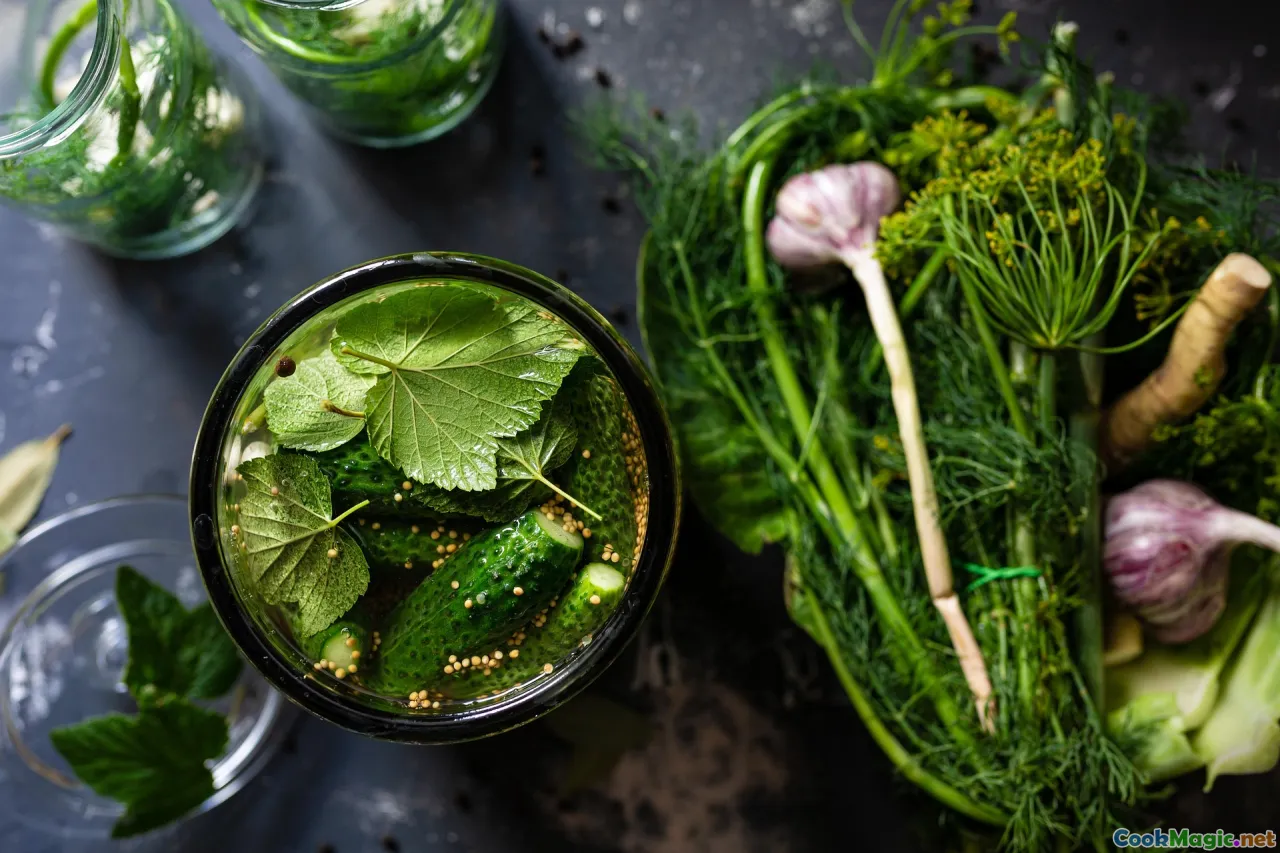
A Russian table without pickles is like a poem without meter. The brine isn’t just flavor—it’s architecture.
- Cucumbers: Serve malossol (lightly salted, lacto-fermented) cucumbers when in season. If you can’t find them, quick-pickle Persian cucumbers with brine (500 ml water, 2 tablespoons salt, 1 tablespoon sugar, 4 crushed garlic cloves, dill stems, black peppercorns). Ferment at room temperature 24–36 hours for snap and tang.
- Tomatoes: Pomidorchiki—small green or red tomatoes pickled firm—deliver sweet-sour juiciness that floods the palate after a nip of vodka.
- Sauerkraut (kvashenaya kapusta): Keep it bright, not soggy. Squeeze lightly and dress with sunflower oil, grated carrot, caraway, and cranberries.
- Mushrooms: Here, insist on safety. Serve commercially prepared pickled mushrooms—gruzdi (milk caps), ryzhiki (saffron milk caps), or opyata (honey mushrooms). Their slippery crunch and forest aroma act like autumn on a plate. Toss with thin red onion and dill.
- Soaked apples (mochyonye yabloki): A northern specialty—apples fermented until sparkling inside, skins still taut. Sliced, they lend perfume and an almost cider-like fizz.
Every ferment should be living with acidity, not drowned in vinegar. That’s why a splash of the brine on a potato slice is practically a love letter.
The Creamy-Rich Axis: Dairy, Spreads, and the Soft Voice of Smetana
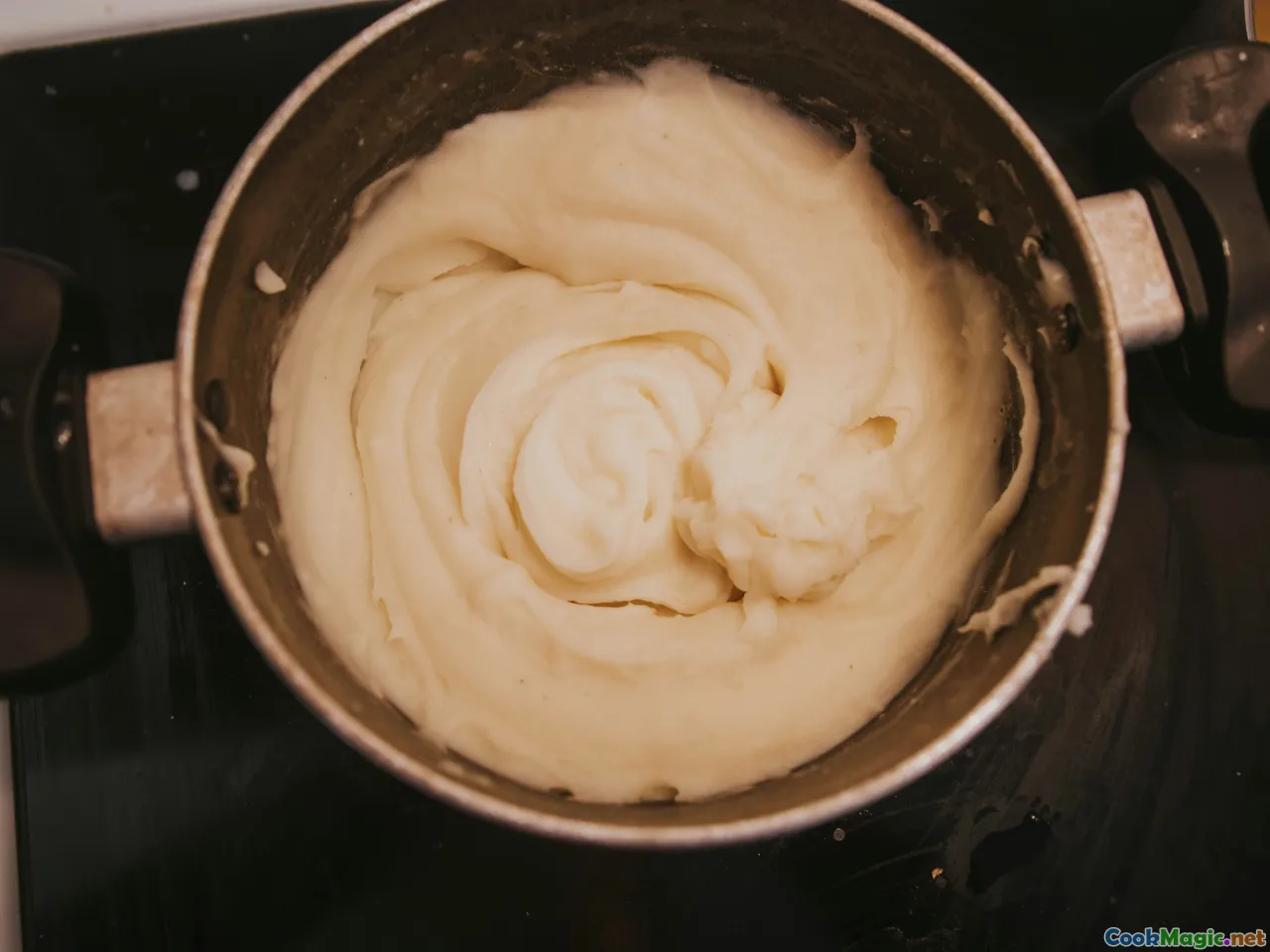
Dairy stitches the table together.
- Smetana (sour cream): Full-fat, tangy, and spoonable. Serve in a cold glass bowl. It’s the buffer between salt and spirit.
- Vologda butter or the best cultured butter you can find: Form curls or quenelles and sprinkle with flaky salt. Butter belongs under caviar, beside herring, and absolutely on black bread.
- Tvorog spread: Mix 300 g fresh farmer’s cheese with 2 tablespoons smetana, a tablespoon chopped dill, grated zest of half a lemon, and a pinch of salt. The lemon lifts the dairy into perfume territory. Serve with radishes.
- Forshmak: A Jewish-Russian classic that has saved more parties than any playlist. Blend 200 g salted herring fillets (rinsed), 1 tart apple, 1 small onion sautéed gently in butter, 2 slices of soaked white bread (squeezed dry), 50 g softened butter, a teaspoon of mustard, and a splash of apple cider vinegar. Pulse until a pâté forms—do not puree to baby food. Chill well, serve with dill and rye toasts.
- Mushroom caviar: Roast 500 g mixed mushrooms with garlic and thyme, then mince with 2 tablespoons sunflower oil and a touch of sherry vinegar. The spread should taste dusky and slightly sweet.
For traditionalists, a plate of salo—cured pork back fat—cut paper-thin and rubbed with garlic and black pepper, belongs here. If you don’t eat pork, substitute roasted eggplant slices brushed with smoked paprika and olive oil for a similar mouthfeel and drift of smoke.
The Meat Chapter: Cold Roasts, Charcuterie, and Aspic Done Right
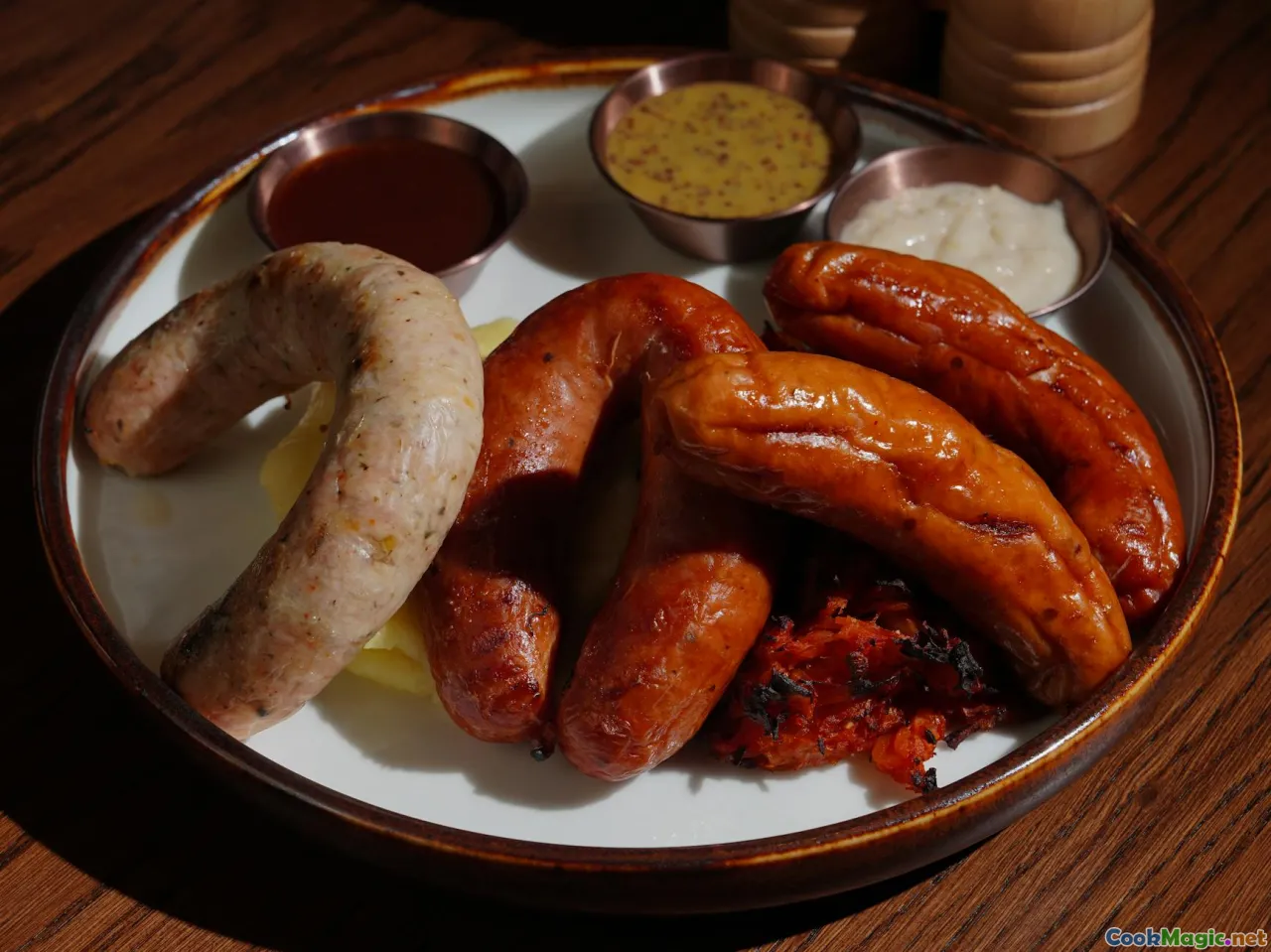
Zakuski meats are rarely heavy; they’re cool, thin, and politely intense.
- Buzhenina (cold roasted pork): Rub a 1.5 kg pork neck with 2 tablespoons mustard, 1 tablespoon honey, 6 smashed garlic cloves, 1 tablespoon paprika, salt, and black pepper. Roast at 160°C until 68–70°C internal, chill overnight, slice thin. The sweet-salty crust holds like lacquer.
- Kolbasa and servelat: Go for a dry-cured servelat and a classic Doktorskaya for contrast—peppery vs. mild, elastic vs. delicate. Slice diagonally for longer, elegant pieces.
- Beef tongue (yazyk s khrenom): Simmer with onion, carrot, bay, and peppercorns for 2.5–3 hours until tender. Peel while warm, cool, and slice thin. Serve with grated fresh horseradish mixed with smetana and a trickle of beet juice for blush.
- Kholodets (aspic): Done badly, it’s a culinary dare. Done well, it’s a jewel—transparent, wobbling like a pond in wind. Use a mix of pork hocks and shanks, simmered long with aromatics, clarified, enriched with shreds of meat and carrot coins. Serve very cold with mustard and horseradish. Keep portions small.
- Georgian notes: Thin slices of basturma (air-dried spiced beef) or sudzhuk bring a Caucasian warmth—coriander, fenugreek, garlic—that flatters vodka.
Meats should not scream; they should hum. A swipe of horseradish, a caper, a squeeze of lemon—season the plate as you would tune a violin.
Breads, Blini, and the Carbohydrate Architecture
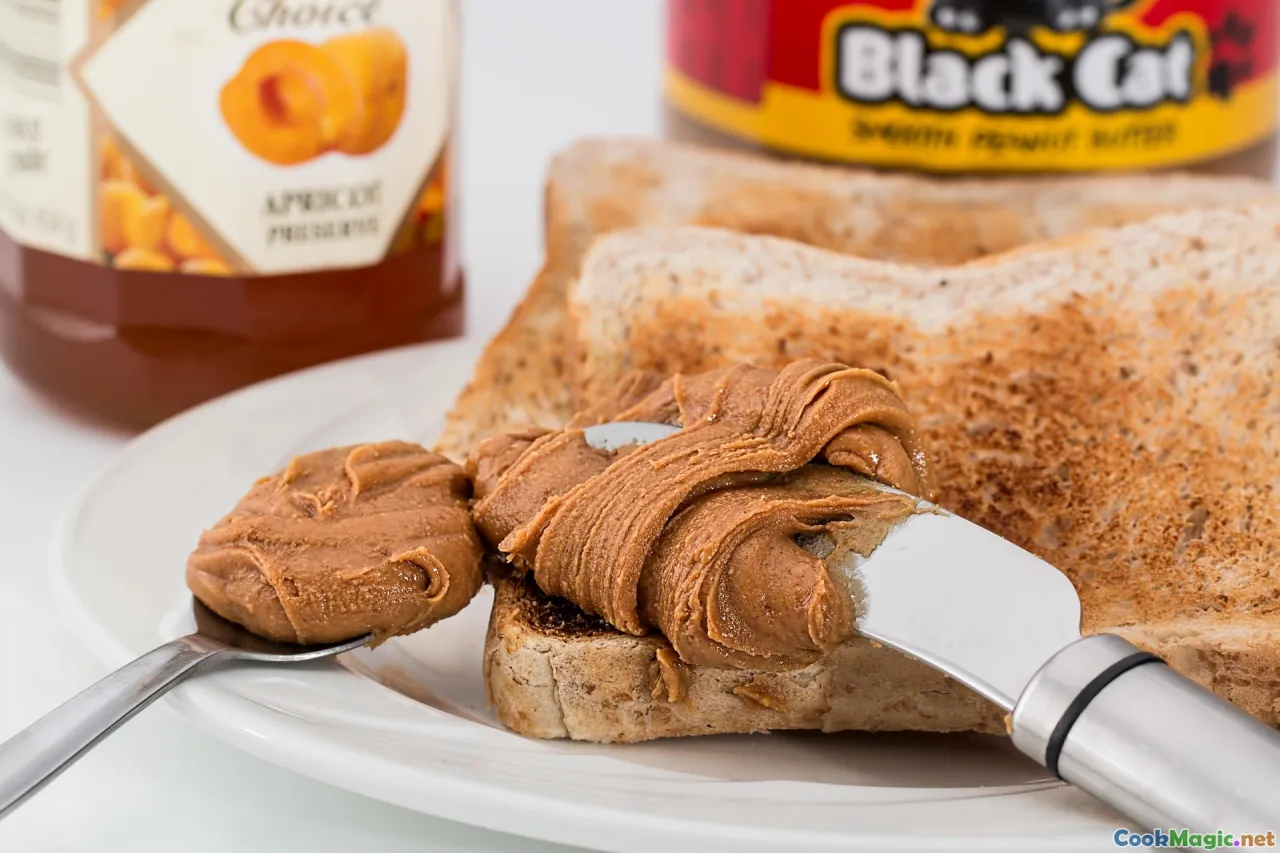
Bread is not a side—it’s structure.
- Borodinsky: Dark rye dusted with coriander seeds, with a molasses-like sweetness and bitter undertone. Slice thin; it’s aromatic wallpaper for everything salty and smoked.
- Lithuanian-style rye: Dense, sour, malty. For the herring people.
- Baton (soft white loaf): The diplomatic bread for children, elders, and delicate fish.
- Blini: Make small (7–8 cm) yeasted buckwheat blini and keep them warm wrapped in a towel. They should be elastic pillows for roe and smetana. Reheat in a dry skillet briefly to restore bounce.
- Pirozhki: Tiny hand pies stuffed with cabbage and egg, or mushroom and buckwheat. Serve warm. They bring that baked-butter fragrance that coaxes a second drink.
- Draniki (potato pancakes): A Belarusian kiss—shallow-fry until frilly at the edges; drip-dry on paper; serve with smetana and dill. These can rescue guests who veer too salty.
A small dish of toasted buckwheat groats (kasha) with butter can sit modestly among the show-stoppers, offering nutty punctuation between bites.
Caviar and Roe: Splendor Without Depleting the Treasury
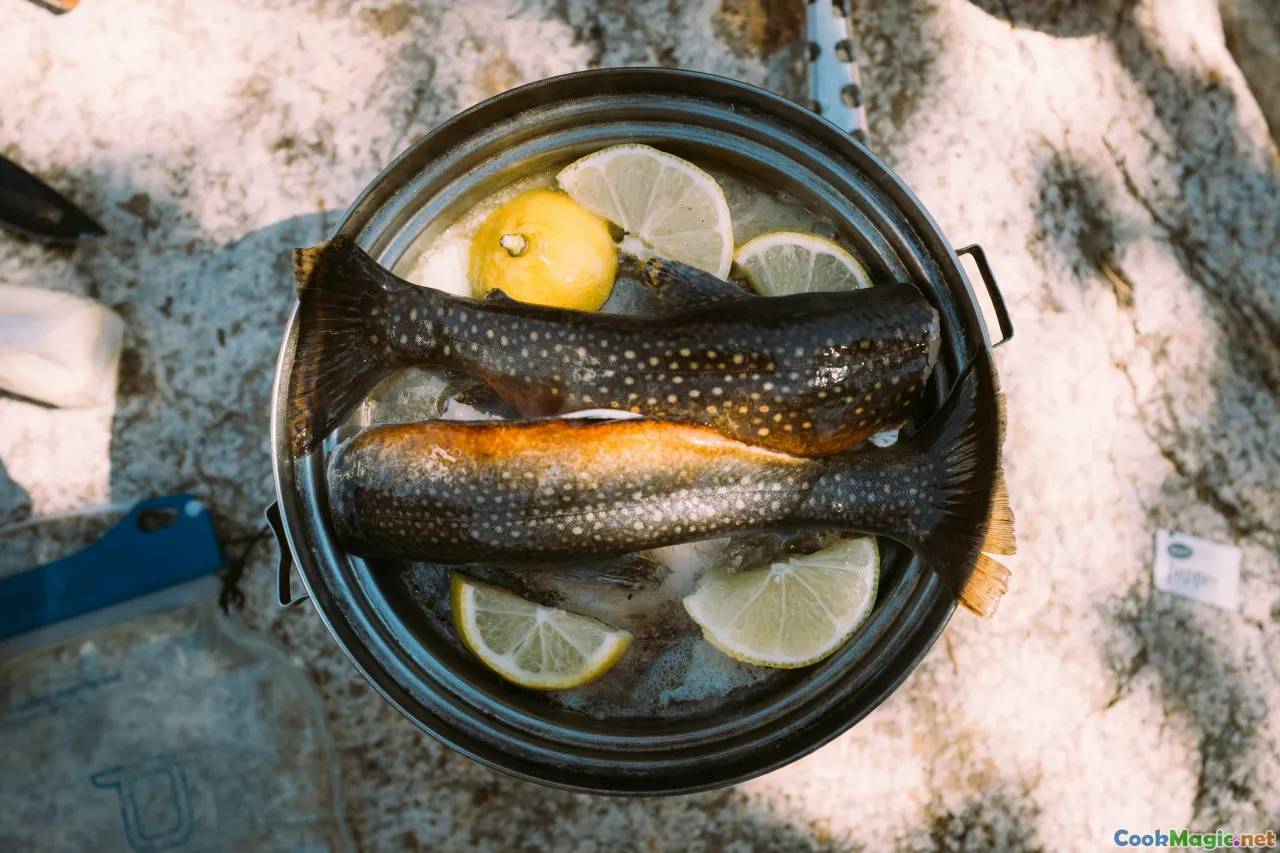
The dream: a tin of oscietra opened with a whisper and passed around like a crown. The reality: smart shopping and meticulous care.
- Types to consider: Salmon roe (ikra) is generous and radiant; pike roe is smaller, golden, with a gentler pop; whitefish roe is delicate and briny. If you splurge on sturgeon roe, choose reputable sources and keep it simple.
- Service: Nonreactive spoons, bowls set over ice, and minimal handling. Keep caviar sealed and refrigerated at the coldest part of your fridge; once opened, consume within 2–3 days.
- Portion planning: For a party of 10, 200–250 g salmon roe is ample, especially with other fish on the table. If adding sturgeon roe, 30–50 g as a tasting will thrill without ruin.
- Pairings: Buttered blini, faintly warm, and barely salted. A wisp of smetana if desired. Never drown the roe; let it speak.
A small trick for drama: serve roe in glass votive cups nestling in a larger bowl filled with crushed ice and lemon leaves. The translucence elevates without being precious.
Salads and the Geometry of Cubes: Olivier, Vinegret, and Mimosa
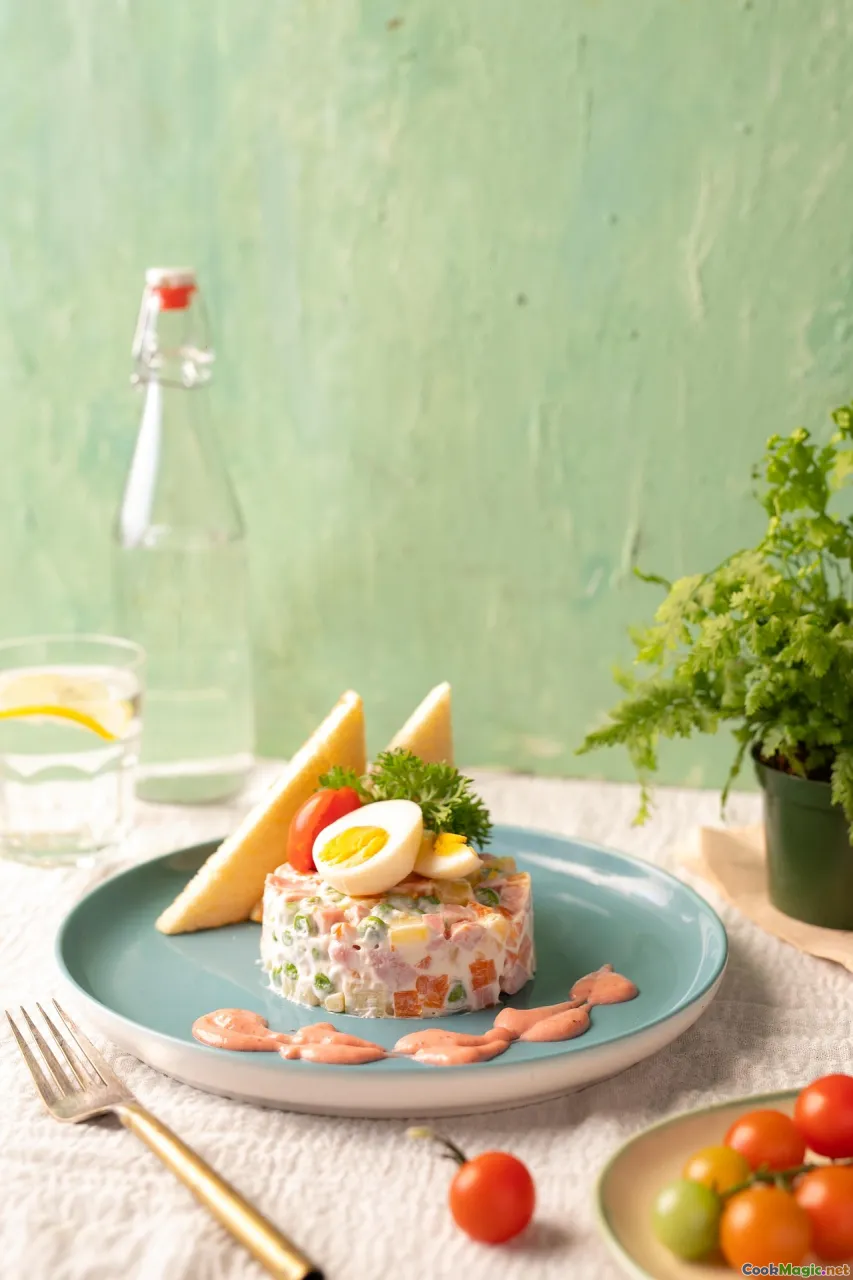
There is a reason Russian salads are diced with almost neurotic precision: even cubes create even flavor. A well-made Olivier is the quiet heart of a zakuski table.
- Olivier: Dice cooked potato, carrot, and pickles into 6–8 mm cubes. Poach chicken breast or use good-quality ham; dice identically. Add canned peas (drained), a generous amount of dill, and a dressing of mayonnaise cut with a spoonful of smetana, a teaspoon of mustard, and a spoon of pickle brine for brightness. Salt lightly—pickles and ham are salty. Chill and garnish with sliced quail eggs if you like ceremony.
- Vinegret: Beet, potato, carrot, sour cabbage (or sauerkraut), pickles, sunflower oil, and sometimes peas or beans. Toss with sunflower oil and a splash of brine. The beets stain everything magenta; the dish tastes like winter sun.
- Mimosa: A layered salad with canned fish (salmon or sardine), grated egg whites and yolks, onion, carrot, and a mere film of mayo. If made deftly, it’s feather-light and nostalgic.
Ring molds help if you want vivid verticality on a platter. But a humble bowl kissed with dill will do the trick.
Seasonality and Regional Notes: From the Baltic to the Far East
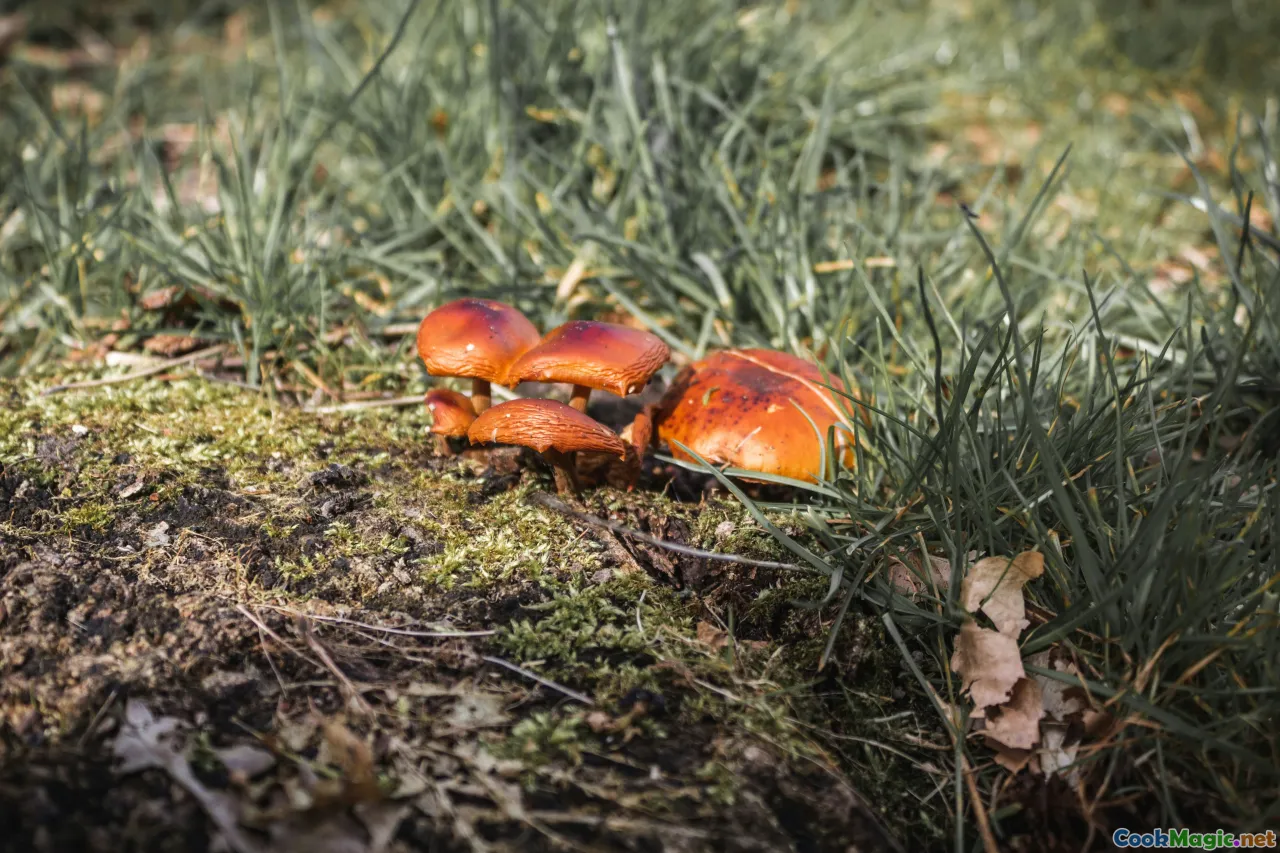
Zakuski shift with geography and season.
- Moscow and Petersburg: Smoked salmon, herring under fur coat, sprats, caviar, and refined cold meats.
- Volga region: River fish—pike, zander—marinated in onion and oil; sun-warmed tomatoes; herb-heavy salads.
- Siberia: Dried vobla and omul, pickled forest mushrooms, ramson (wild garlic) in spring. On a winter night in Tomsk, I ate pickled mushrooms so crisp they squeaked—a strange music that felt exactly like the crunch of snow.
- Caucasus: Herbs by the handful; walnut pastes; adjika (fiery) and tkemali (sour plum) sauces to wake up fatty meats.
- Far East: Kamchatka crab legs split and chilled; salmon roe so fresh it snaps like new ice; seaweed salads dressed simply with oil and lemon.
Let your region guide your emphasis: more mushrooms in autumn, more tomatoes and light pickles in summer, more cured fish and root vegetable salads in winter.
A Two-Day Game Plan: Efficient, Calm, and Generous

For 10 guests, aim for 12–16 items. Here’s a schedule that won’t leave you weeping into the beet grater.
Two days before:
- Cure salmon (900 g) for semga.
- Start kvass or buy quality bottled.
- Shop for pickled mushrooms (commercial), sprats, sausages, bread.
- Make horseradish sauce by grating fresh root and cutting with smetana and a squeeze of lemon; rest in fridge.
One day before:
- Roast pork for buzhenina; chill.
- Cook tongue; chill.
- Boil potatoes, carrots, beets; chill separately.
- Make vinegret; it benefits from an overnight.
- Prepare forshmak and mushroom caviar; chill.
- Quick-ferment cucumbers; start in the morning for 24-hour ferment.
- Make blini batter if using yeast; refrigerate.
Morning of:
- Dice for Olivier; dress lightly; chill.
- Slice meats and arrange; cover tightly.
- Set breads; slice; keep covered.
- Assemble selyodka pod shuboy (if not made the day before) or simply uncover and admire.
- Slice cured salmon; arrange with lemon and dill.
- Chill vodka and glassware.
One hour before guests:
- Arrange platters; add fresh herbs.
- Set roe over ice with nonreactive spoons.
- Warm blini gently; hold wrapped.
- Place pickles and sauerkraut in small bowls with a drizzle of sunflower oil.
- Put butter on the table to soften slightly.
Quantities per 10 guests (approximate):
- Fish: 900 g cured salmon, 2 tins sprats, 400 g salted herring fillets, 200–250 g salmon roe.
- Meats: 1.2–1.5 kg total across pork roast, tongue, and sausages.
- Salads: 1.2 kg total—Olivier (700 g), vinegret (500 g).
- Pickles/ferments: 1 kg mixed.
- Bread/blini: 2 loaves rye, 1 loaf baton, 30 small blini.
- Dairy/spreads: 400 g smetana, 200 g butter, 300 g tvorog spread, 350 g forshmak, 300 g mushroom caviar.
- Spirits and drinks: 1.5–2 liters vodka (depending on crowd), 2 liters mors or kvass, sparkling water.
Design and Plating: Color, Height, and Rhythm
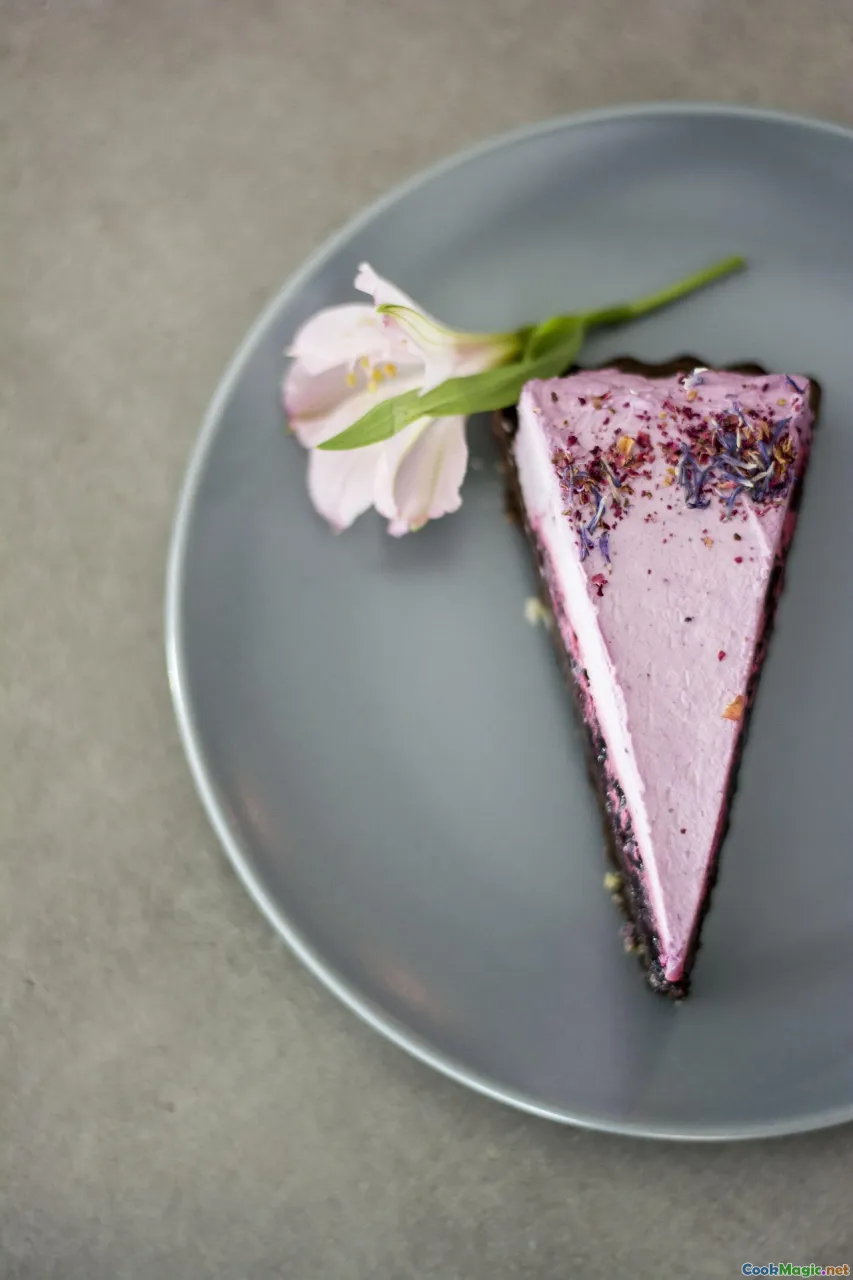
Think like a painter and a choreographer.
- Color: Alternate dark and light—black bread near rosy salmon, white smetana next to magenta vinegret, golden butter beside emerald cucumbers.
- Height: Use cake stands for blini or a footed crystal bowl for pickles to add dimension. Stack thinly sliced meats into gentle rosettes.
- Rhythm: Place bolder items (herring, sprats, horseradish) apart from each other so guests can reset in between with bread and dairy.
- Shine: A whisper of sunflower oil restores gloss to tired salads. Lemon wedges refresh the look of fish.
- Labels: Elegant tent cards help guests navigate—for example, “Buzhenina—cold pork roast,” “Mushroom caviar,” “Herring under fur coat.”
- Practical: Keep extra napkins within reach. Use unscented candles only—scented wax will wrestle with your smoked sturgeon and win for the wrong reasons.
Comparing Traditions: Zakuski, Tapas, Mezze, and Smörgåsbord
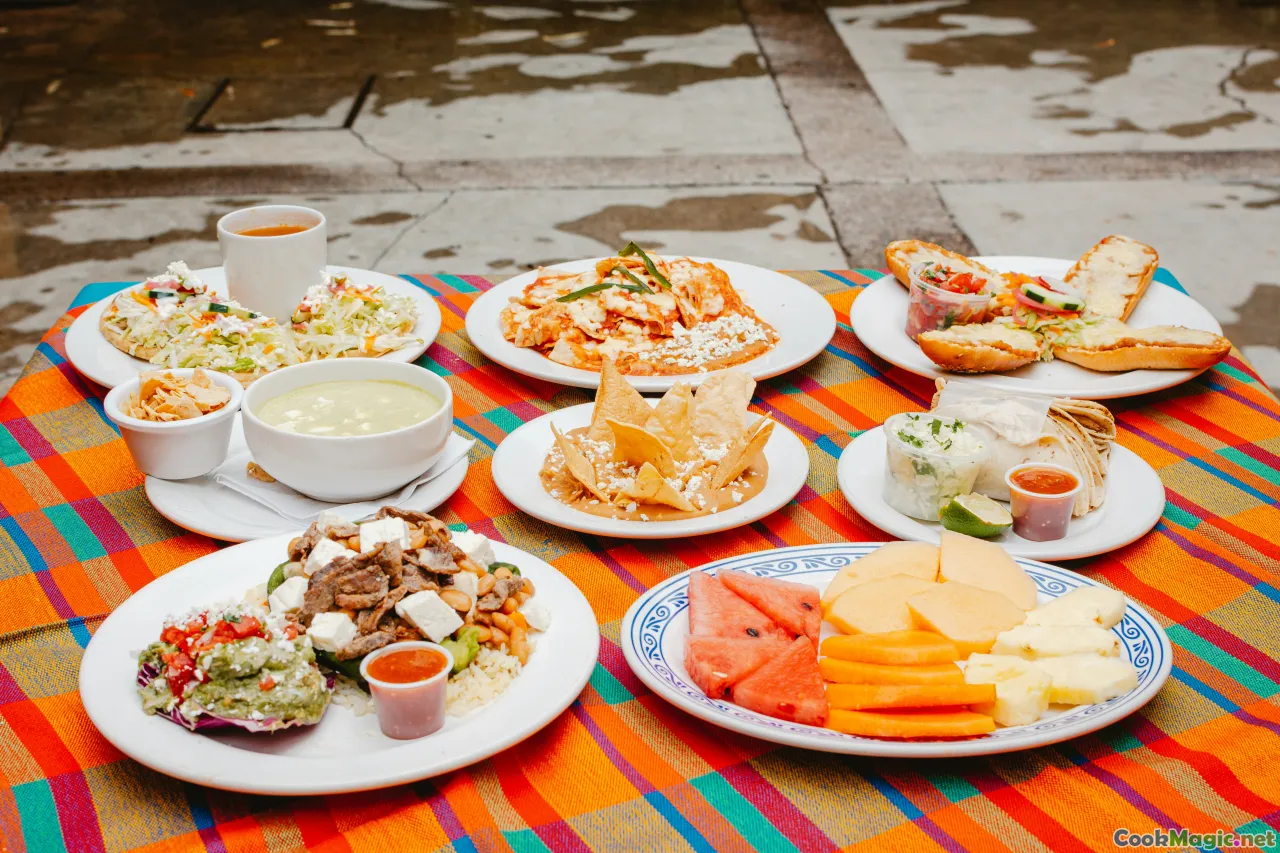
Zakuski shares the democratic spirit of tapas and the generosity of mezze, but it’s anchored by climate and drink. Instead of olive oil and wine, think sunflower oil and vodka; instead of warm chickpeas and grilled octopus, think cold smoked fish and fermented cucumbers. Nordic smörgåsbord comes closest—blini and rye echo crispbreads and potato salads—but zakuski is more perfumed with dill and more devoted to the ritual of the shot glass.
Where mezze sprawls in summer heat, zakuski glitters in winter lamplight. Still, the traditions can converse: a little Georgian adjika alongside cold pork, aquavit in place of vodka, or a few Spanish boquerones lining up with herring like cousins at a reunion.
A Story from a Communal Kitchen: Aunt Lena’s Red Enamel Pot

My neighbor, Aunt Lena, used to keep a red enamel pot on the windowsill. In winter, it was the coldest shelf in our lives. Under the heavy lid lived a rotating treasure: malossol cucumbers in summer; sauerkraut in autumn; a lump of butter in winter. On New Year’s Eve, she’d appear with a loaf of rye balanced on her palm like a newborn and a plate of herring that smelled faintly of the Black Sea. There was always a little something extra in her apron pocket—an apple, a chocolate, a clove of garlic—“for luck,” she’d say, tucking it somewhere on the table.
Once, during a January blackout, we assembled a zakuski entirely by flashlight: sprats on toast, pickles eaten from the jar with forks, butter hacked in cubes that gleamed like candles. We drank freezer-cold vodka from teacups and listened to the pipes creak. The table turned the dark into company. That’s what zakuski does. It argues that little, well-chosen bites can hold a room together even when the lights go out.
Market Notes and Sourcing: Where to Find the Good Stuff

The magic is in the ingredients.
- Russian and Eastern European delis: In New York, Brighton Beach’s NetCost or Gourmanoff. In Toronto, Yummy Market. In London, Kalinka on Queensway. In Berlin, Russkij Magazin Intermarkt. These shops carry sprats, pickled mushrooms, rye bread, smetana, kolbasa, and often decent roe.
- Online caviar and roe: Reputable sellers ship insulated; check harvest dates and salt content (malossol). Look for salmon roe labeled with firm grains and minimal additives.
- Butchers and fishmongers: Ask for cold-smoked rather than hot-smoked fish for slicable texture. For pork neck or shoulder suited to buzhenina, a little fat marbling is desirable.
- Farmers’ markets: For dill that smells like a field and cucumbers with tight skins. Look for small Persian or Kirby cucumbers for crunch.
- Safety: Buy pickled mushrooms from trusted sources. Home-foraging is romantic until it isn’t; botulism is not a seasoning.
Dietary Considerations and Modern Twists That Respect the Form

Zakuski is a framework, not a dogma.
- Vegetarian: Lean into mushroom caviar, beet salads, roasted eggplant “ikra,” herbed tvorog, pickled tomatoes, cucumber-dill salads, potato pancakes, and blini with butter and dill.
- Vegan: Swap smetana with cashew sour cream; serve olive oil–brushed rye, hummus kissed with grated horseradish, charred cabbage wedges with dill vinaigrette, and marinated roasted beets with walnuts.
- Gluten-free: Buckwheat blini with no wheat, potato pancakes, naturally gluten-free pickles and salads, and corn-based rye-style breads.
- Low alcohol or no alcohol: Kvass, mors, kefir-tarragon spritz, or a tea service. A juniper-forward tonic with cucumber ribbons makes a crisp partner.
- Lighter mayonnaise: Use a 50/50 blend of mayo and thick yogurt in Olivier. Add mustard and brine for bite.
Respect the grammar of the table—contrast, coolness, dill, black bread—and the language can be written anew.
Troubleshooting: When Herring Takes Over and Other Tiny Disasters
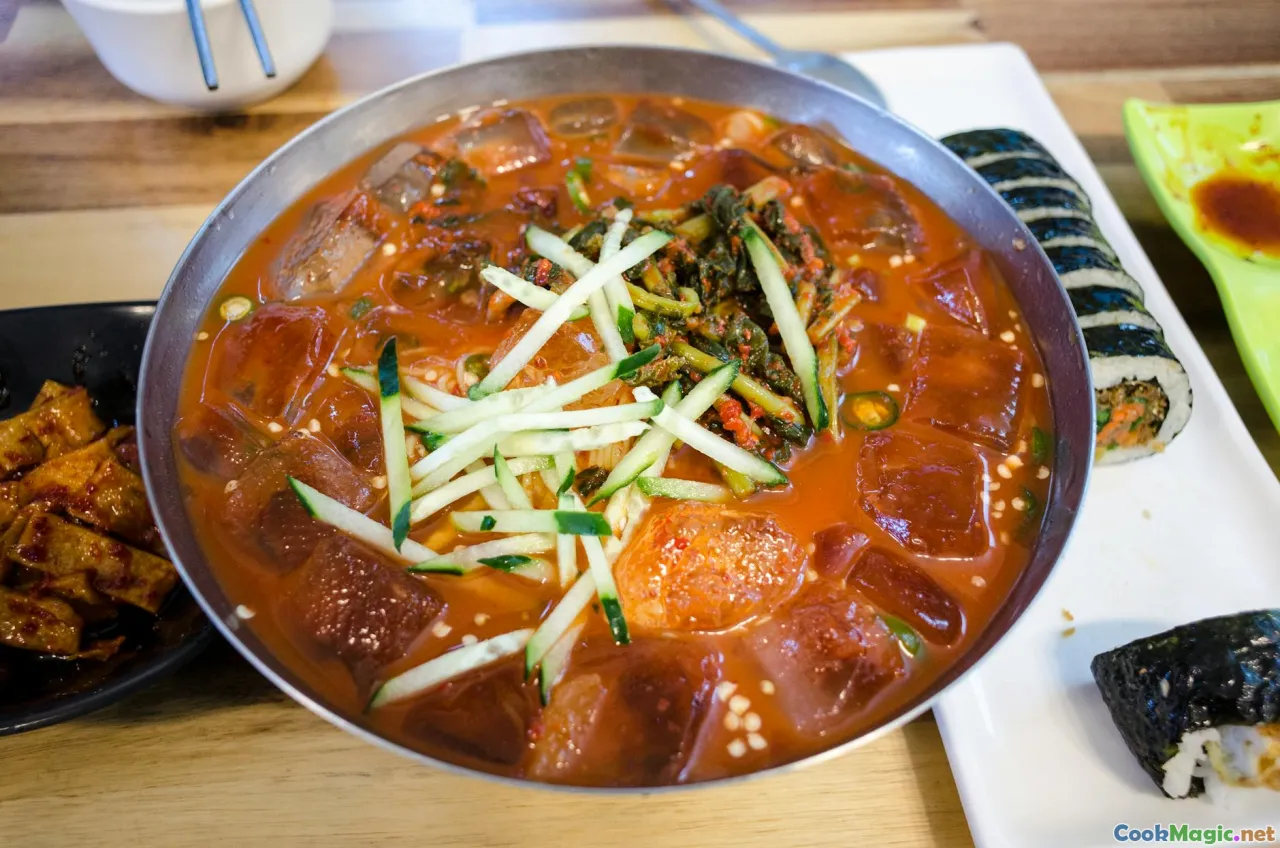
- Herring aroma too dominant: Separate fish to their own platter; keep onions pickled in lemon to tame their punch; place lemon wedges nearby and refresh frequently.
- Mayo sheen forming on salads: Toss just before serving; keep chilled; a teaspoon of vinegar and a spoon of smetana stabilize the dressing.
- Caviar slips from blini: Spread a whisper of butter or smetana first; it creates grip and adds flavor.
- Blini gone rubbery: Reheat briefly in a dry skillet; don’t microwave. Keep wrapped to prevent drying.
- Aspic melting: Serve kholodets on a tray set over ice if your room runs warm; slice cold and plate quickly.
- Pickles too sour: Rinse quickly and dress with a few drops of honeyed sunflower oil; the sweetness rounds edges.
- Table looks flat: Add height with a cake stand and color with a small bowl of cranberries or pomegranate seeds.
Three Sample Menus: Plug-and-Play Zakuski for Real Parties
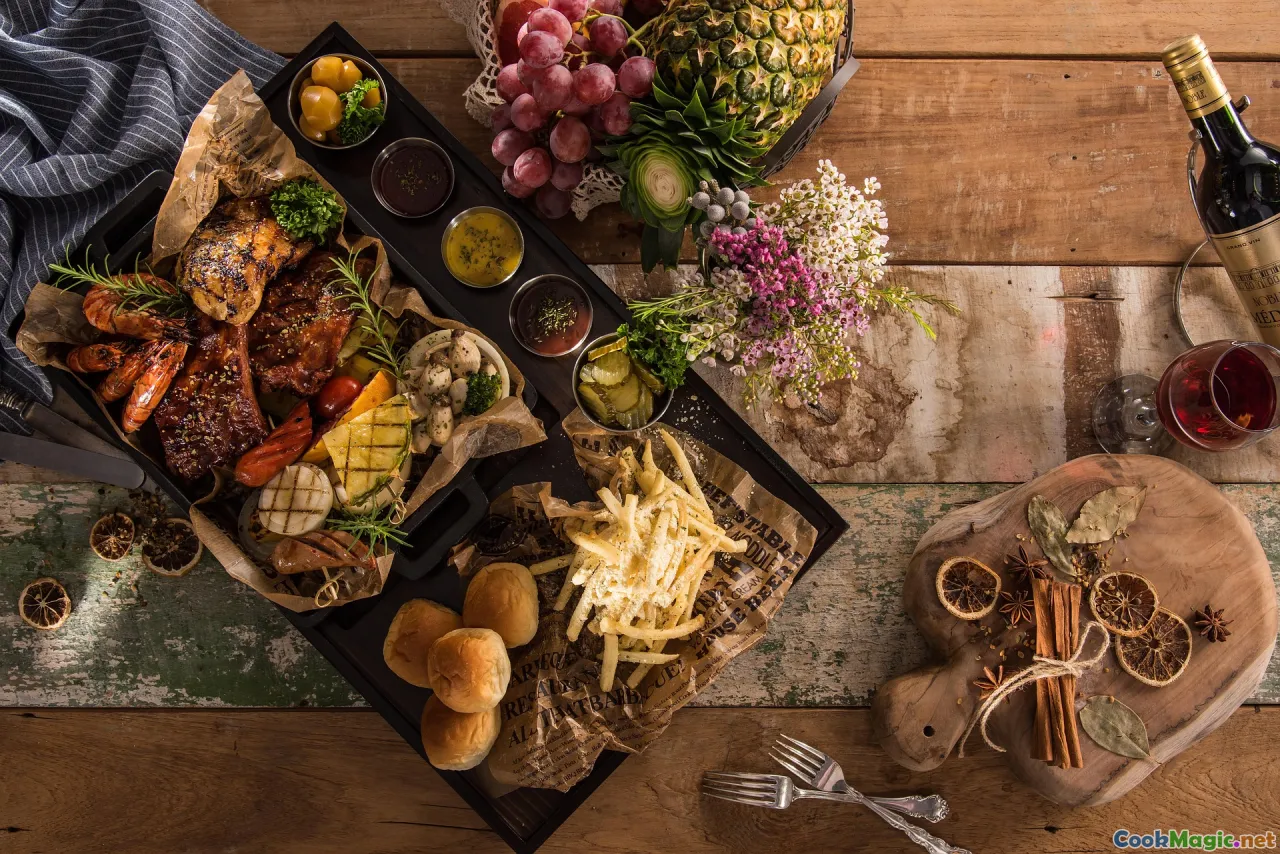
Winter New Year (glittering, classic):
- Cured salmon with lemon and dill
- Herring under a fur coat
- Salmon roe with blini, butter, and smetana
- Buzhenina (cold pork roast)
- Beef tongue with horseradish
- Sprats on rye toasts
- Olivier salad with chicken
- Vinegret with sauerkraut
- Pickled cucumbers and tomatoes
- Pickled mushrooms with red onion
- Borodinsky and baton
- Smetana, butter curls, tvorog-dill spread
- Vodka (wheat), mors, sparkling water
Summer Dacha (sunny, herb-crushed):
- Lightly salted cucumbers (malossol)
- Tomato wedges with dill and sunflower oil
- Cold-smoked salmon with lemon
- Mushroom caviar
- New potatoes with butter and dill
- Grilled zucchini ribbons with garlic and herbs
- Pirozhki with cabbage and egg
- Beet carpaccio with walnut and tarragon
- Fresh radishes with salt and tvorog spread
- Buckwheat blini
- Kvass, chilled tea with lemon, light vodka or aquavit
Seafood-Forward (Baltic breeze):
- Cold-smoked sturgeon or sablefish
- Cured salmon with coriander and vodka
- Baltic sprats with lemon on rye
- Pike roe with blini
- Herring fillets with red onion and warm potatoes
- Cucumber salad with dill and mustard seeds
- Sauerkraut with cranberries
- Borodinsky and white baton
- Smetana, butter curls
- Vodka (rye), sparkling mineral water, mors
Each menu feeds 8–10, with quantities as in the game plan.
A Few Microrituals That Change Everything

- Wake the dill: Gently slap dill sprigs between your palms before garnishing; it releases fragrance.
- Lemon without seeds: Cut cheeks, not wedges; they look cleaner and don’t rain seeds on caviar.
- Tidy edges: Wipe plate rims. Zakuski is abundant, not sloppy.
- Quiet spoons: Provide a spoon for every shared bowl to reduce traffic.
- A toast with manners: Raise your glass, meet eyes, say Za zdorovye (to health), sip—don’t slam—then take a bite. The bite is part of the toast.
The night ends the way all good Russian evenings do: coats retrieved from a heap, cheeks pink, the table ragged but dignified. A smear of beet on a plate, a lone sprig of dill clinging to the butter dish, a few blini napping under their towel. Outside, the air bites; inside, the cold fish and warm bread have convinced strangers to become a little less strange.
Building a zakuski platter is more than arranging food. It is an argument for hospitality as texture and temperature, for generosity as a series of small tastes, for the kind of evening that opens with a glint of roe and a scatter of dill and ends with someone, inevitably, reciting a poem. Set the table; chill the vodka; let the room fill. The landscape will take care of the rest.









